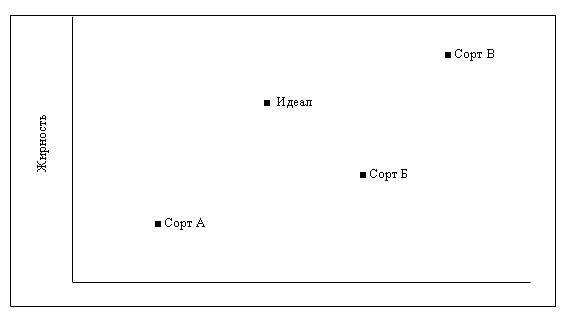home
 Marketing Marketing
 Principles of Marketing - Philip Kotler Principles of Marketing - Philip Kotler
|
Principles of Marketing - Philip Kotler
Goods
Human needs, the needs and demands suggest the existence of products to meet them. This product we define as follows:
Goods? all that can satisfy a need or want and offer the market in order to attract attention, acquisition, use or consumption.
Suppose a woman feels the need to look beautiful. All products that can meet this need, we call the product range selection. This range includes makeup, new clothes, holiday tan, facial treatments, plastic surgery, etc. Not all of these products are equally desirable. Most likely, in the first place will be purchased goods and services more affordable and cheap, such as cosmetics, clothing or a new hairstyle.

Fig. 1. Three satisfaction
You can draw a specific product and a specific human need as a community, and the ability of goods to satisfy the need to introduce a degree of alignment. Fig. 1 shows that the product does not satisfy the need for X, B goods satisfies it in part, and the goods in? completely. In this case, the product will be called in the "perfect product".

Fig. 2. Comparison of varieties of ice cream in terms of fat and sweets
The more matches the desires of the consumer goods, the manufacturer will achieve greater success. Suppose a manufacturer of ice cream asks the consumer, what degree of fat ice cream and sweets to enjoy. We also assume that the answer is shown in Fig. 2 point marked "Ideal". After that, the consumer is asked to try three competing ice cream varieties and to define the degree of fat and sweets. Suitable places each class as represented by dots in Fig. 2. Grade B to a greater extent than others, combines the desired properties of the ideal levels. If the manufacturer will offer ice cream, standing to the consumer closer to the ideal than Class B, the novelty has to go on the market the best of the class when the comparability of their price, availability and other conditions.
The moral is that the manufacturers have to find consumers who want to sell them, find out their needs, and then create a product as much as possible to meet these needs.
The concept of "goods" is not limited to physical objects. Goods can be called everything that can provide a service, ie, meet the need. In addition to the products and services, they can be individual, places, organizations, activities and ideas. The consumer decides what kind of entertainment programs on television to see, where to go on vacation, which organizations to assist, what ideas to support. And if the use of the term "goods" seem unnatural at times, it can be replaced by others? "Satisfactory needs", "refund" or "offer". All these words have a certain value value for different individuals.



Comments
Commenting, keep in mind that the content and the tone of your messages can hurt the feelings of real people, show respect and tolerance to his interlocutors, even if you do not share their opinion, your behavior in terms of freedom of speech and anonymity offered by the Internet, is changing not only virtual, but real world. All comments are hidden from the index, spam control.